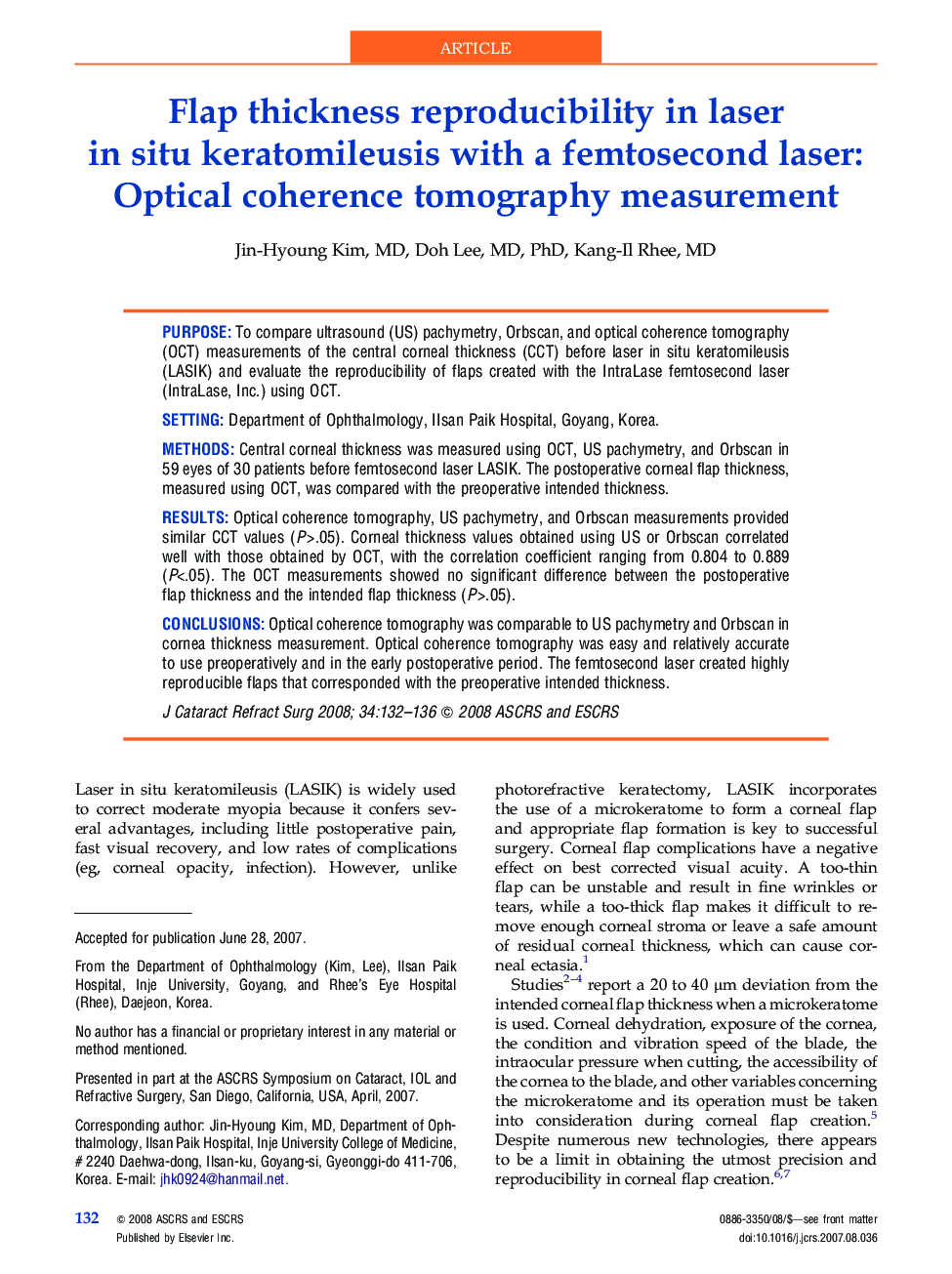| Article ID | Journal | Published Year | Pages | File Type |
|---|---|---|---|---|
| 4022091 | Journal of Cataract & Refractive Surgery | 2008 | 5 Pages |
PurposeTo compare ultrasound (US) pachymetry, Orbscan, and optical coherence tomography (OCT) measurements of the central corneal thickness (CCT) before laser in situ keratomileusis (LASIK) and evaluate the reproducibility of flaps created with the IntraLase femtosecond laser (IntraLase, Inc.) using OCT.SettingDepartment of Ophthalmology, IIsan Paik Hospital, Goyang, Korea.MethodsCentral corneal thickness was measured using OCT, US pachymetry, and Orbscan in 59 eyes of 30 patients before femtosecond laser LASIK. The postoperative corneal flap thickness, measured using OCT, was compared with the preoperative intended thickness.ResultsOptical coherence tomography, US pachymetry, and Orbscan measurements provided similar CCT values (P>.05). Corneal thickness values obtained using US or Orbscan correlated well with those obtained by OCT, with the correlation coefficient ranging from 0.804 to 0.889 (P<.05). The OCT measurements showed no significant difference between the postoperative flap thickness and the intended flap thickness (P>.05).ConclusionsOptical coherence tomography was comparable to US pachymetry and Orbscan in cornea thickness measurement. Optical coherence tomography was easy and relatively accurate to use preoperatively and in the early postoperative period. The femtosecond laser created highly reproducible flaps that corresponded with the preoperative intended thickness.
